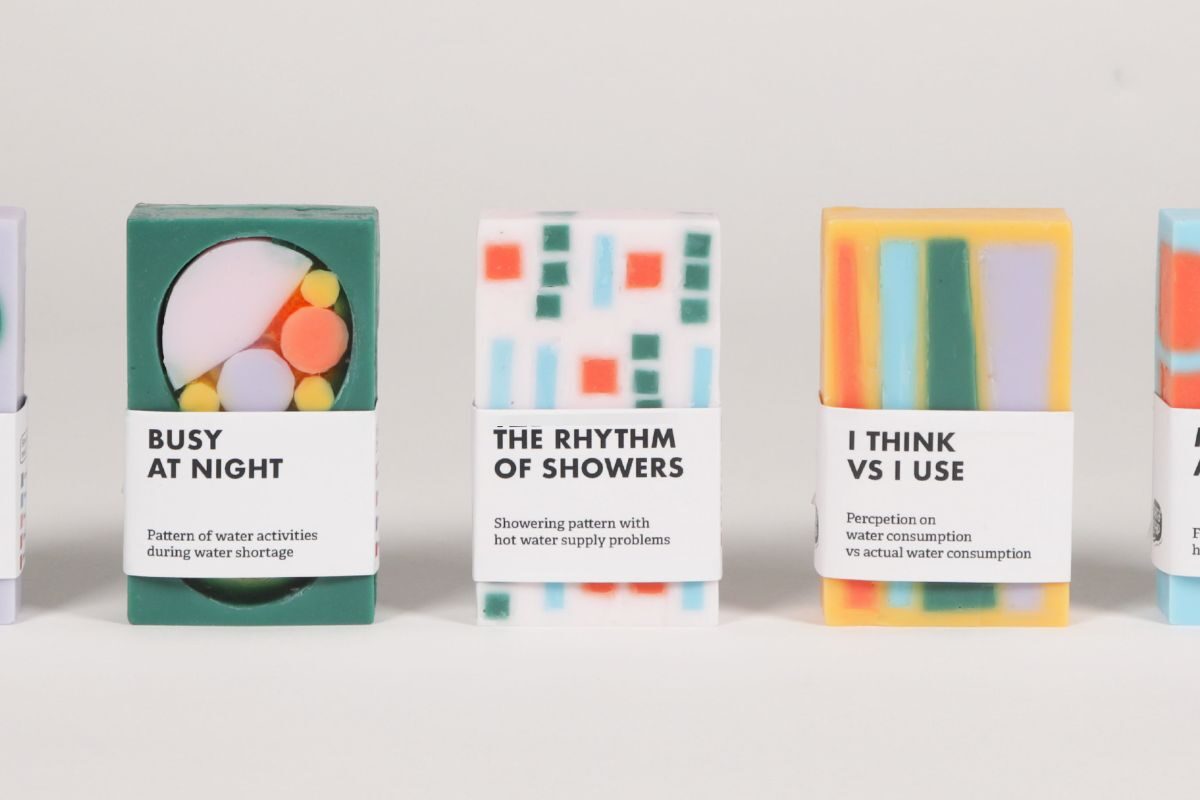Meet the UAL grads combatting climate-change with creativity

At UAL, we’re committed to using creative practice and thinking to change the world and help address some of the biggest challenges of our time. This Earth Day, we’re celebrating 9 inspiring UAL graduates who are paving the way to a sustainable future through their work.
You can discover more excitingwork on our Graduate Showcase.
Origami-inspired zero-waste pattern cutting
Pei Li – MA Pattern and Garment Technology, London College of Fashion
In an effort to reduce waste in the fashion industry, Pei Li combines the art of origami with zero-waste pattern cutting in the ‘Folding’ project.
Beginning with just a rectangle or square, Pei’s collection is comprised of 3 garments – a skirt, a jumpsuit and outerwear. All the clothes in the collection can be laid flat on the table, or they can be folded into small squares, making them easier to store and carry.
Waste milk and rethinking prosthetics in India
Digby Usher – BA Interaction Design Arts, London College of Communication
3.7 million gallons of milk are wasted every day in India alone. Exploring how this waste can be utilised, while also supporting the amputee population in the country, Interaction Design Arts graduate Digby Usher explores waste milk as a material to create prosthetic limbs. Co-creating a bioplastic that can be moulded and reused, Digby not only focuses on the materiality of waste milk, but also considers how the prosthetics could be delivered and distributed.
“As designers, our practice allows us to join the dots, discovering connections between systems and issues that don’t initially seem related,” says Digby.
Digby now studies MA Biodesign at Central Saint Martins.
Sunflowers for regenerative fashion practices
Jess Redgrave – MA Material Futures, Central Saint Martins
What is fashion’s place in a world that is rapidly running out of natural resources?
Jess Redgrave explores sunflowers as a solution for an industry needing to shift to regenerative practices. Jess’s project Climafibre utilises the whole sunflower to develop a range of viable alternatives for the fashion industry, from cellulose for textiles to an array of pigments, alternative down and a water-resistant coating.
Bean-based circular materials
Kenzo Biswas – BA Product and Industrial Design, Central Saint Martins
The UK produces over 780,000 tonnes of fava bean waste annually, with the shells of left-behind beans staying in landfill and releasing huge quantities of CO2 and methane. Kenzo Biswas has designed a fully biodegradable material to tackle the waste – developing an open-source, mouldable material: BEANCRETE.
Visualising data through soap
Clarice (Tze Ching) Lam – MA Data Visualisation, London College of Fashion
Data Soap reminds people of their water consumption by communicating individual household water data stories through soap. During the research phase, Clarice observed several misconceptions around water stress and inequality. This inspired the development of a product that educates while we engage in activities that use water – the intention of Data Soap is to change behaviour through this visual prompt.
Creating eco-friendly flowers
Sole Mangal – BA Textile Design, Chelsea College of Arts
What is the ecological cost of a bouquet of flowers?
The global flower industry is facing an uphill battle towards sustainability. Sole Mangal raises awareness around the environmental footprint of floristry with ‘Unfamiliar Flowers’. The project incorporates collected floral waste involved in packaging bouquets(such as ribbons, cellophane, floral foam) to create flowers with an infinite shelf life.
Learn more about Unfamiliar Flowers.
Fungi and the future of sustainable colourants
Jesse Adler – MA Material Futures, Central Saint Martins
Can we turn mushrooms into make-up?
In Alchemical Mycology, Jesse Adler explores fungi as a sustainable alternative to synthetic sources of colour in the food, cosmetic and textile sectors. Illustrating the viability of fungal pigments, Jesse created a makeup collection using pigments extracted from mushrooms, lichens, yeast and mould.
Find out more about Alchemical Mycology.
Biomimicry in material production
Tania Malacarne – MA Innovative Fashion Production, London College of Fashion
Brycell is a living and regenerative biomaterial composed mainly of moss and partially of food waste that can be used to create sustainable, circular leather-like products.
Tania Malacarne drew inspiration from emerging technologies that embrace biomimicry and biology, creating a material that promotes a symbiotic relationship between humans and nature, integrating fashion into the natural environment.
Bio-engineered silk
Cova Trujillo Mateos – MA Material Futures, Central Saint Martins
Bio-engineered silk explores how bioengineering processes can shape future notions of luxury materials.
The project team created a biodegradable, ultrathin nanofilm that offers a multitude of fascinating features- representing a major step forward in the quest for a biological circular economy.











Responses